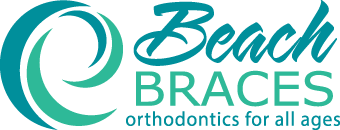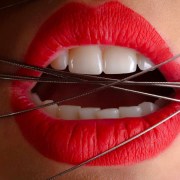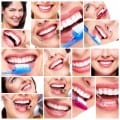What Is a Palatal Expander – [5 Amazing Answers]
Last Updated on April 3, 2019 by Guest Post
After visiting an orthodontist for an examination, you may need to have a palatal expander inserted in your mouth before beginning orthodontic treatment. In addition to fitting and monitoring a patient’s palatal expander, Dr. Panucci offers a variety of orthodontic treatments.
Other Names for Palatal Expanders
This device has additional names, including:
• Hyrax
• Haas
• Orthodontic expander
• Palate expander
• Rapid maxillary expansion appliance
• Rapid palatal expander
No matter what this device is called by patients, it is designed to widen the maxilla in the mouth. The maxilla is the upper jaw, and in order for an individual’s teeth to meet correctly while chewing food or talking, a palatal expander is necessary.
Children or Adults can wear a Palatal Expander
Adults seldom need to wear a palatal expander, but if they do, then the process is more uncomfortable because adults have harder cartilage and bone tissue than children. Children often wear these devices before beginning other orthodontic treatment such as traditional metal wire and bracket braces. A palatal expander is custom-made by a laboratory technician using three-dimensional medical images and computer software. The most common age for children to wear palatal expanders is between 14 and 16. At this age, the bones and cartilage are still soft enough to adjust rapidly after the expander is placed in the mouth. The majority of palatal expanders are affixed with metal rings to the molars toward the back of the mouth, but occasionally, the devices are removable.
Palatal Expanders Create Pressure
An individual wearing a palatal expander will feel pressure inside their mouth and behind their eyes. It is better to avoid eating hard or sticky foods during this treatment and prepare ahead of time by having an assortment of soft foods available. An oral water irrigator device is recommended to wash away the debris from foods and beverages because flossing and brushing are difficult.
A Key Adjusts the Palatal Expander
There are two different types of palatal expanders, including a variety that a patient must adjust with an expansion screw. This variety is suitable for adults to tighten themselves or a parent to tighten for a child. Alternatively, there is a variety that is only adjusted by an orthodontist. The device that is used to adjust the palatal expander is similar in appearance to a small key, and it is in the middle of the device. This key is turned slightly in order to create pressure from the palatal expander on the jaw. In some patients, a gap begins to develop between the upper two front teeth, but this is repairable with additional orthodontic devices.
Reasons for Wearing a Palatal Expander
The average patient will wear a rapid maxillary expansion appliance for nine weeks. However, it is possible that a patient may need to wear the device for a longer amount of time. After the appliance is removed from the mouth, a patient will notice that their mouth feels bigger along with changes in the front teeth such as a gap or overlapping teeth. To prevent the mouth from returning to its original size, a patient is required to wear a customized retainer for a minimum of six months. This treatment may seem like a drastic procedure to patients who think that all they need is to wear Invisalign or braces to repair their teeth but there are good reasons for palatal expander treatment, including:
• Cleft palate – an abnormality of the mouth’s palate
• Cleft lip – an abnormality of the lip
• Problems with the nose or respiratory system – birth defects, disease or accident
• Many types of malocclusions – overbite, overlapping or gaps
• Crowding of the teeth – teeth too close together
• Posterior crossbite – a type of abnormal bite
Each Patient Has a Different Reaction to Treatment
After beginning to wear a palatal expander, a patient’s mouth creates excess saliva. This is an annoyance, but the saliva production begins to reduce within a few days. It is also difficult for patients to talk. The metal of the palatal expander may irritate a patient’s oral tissues, especially the tongue. This device does place significant pressure inside the mouth, and some patients experience headaches and jaw pain. It is difficult to know exactly how each patient will react to wearing a palatal expander, but these are the four main factors involved in this treatment:
• Rate of expansion – slow expansion is less painful
• Applied force – depends on the size of the palatal expander
• Treatment duration – most treatments last approximately two months
• Patient’s age – children’s soft tissues make treatment easier
A palatal expander is an essential appliance to increase the size of a small mouth to provide space for larger permanent teeth, and the devices can help to repair congenital abnormalities such as cleft lips or palates. If a patient has a facial injury or birth defect, then an orthodontist will need to work closely with other medical specialists to repair problems with the teeth, jaw or mouth. Most patients must wear orthodontic devices after completing treatment with a palatal expander, and for mild gaps between the teeth, a patient can wear Invisalign aligners for one year.
Visit an Orthodontic Facility for a Palatal Expander
Dr. Patricia J. Panucci offers expert treatment to adults, teenagers and children who require a palatal expander before wearing traditional, clear or lingual orthodontic devices to repair their malocclusions. In addition to fitting and monitoring a patient’s palatal expander, Dr. Panucci offers a variety of orthodontic treatments, including:
• Invisalign – for adults and teenagers
• Clear – nearly invisible wires and brackets
• Lingual – brackets and wires placed on the backs of teeth
• Self-ligating – no uncomfortable metal ties or bands
• Wild smile – bright designs that many children and teenagers enjoy
Plastic aligners are designed for mild misalignments and are worn for six months to one year while other orthodontic devices are designed for moderate to serious malocclusions and are worn for two to four years.
You can contact Beach Braces located in Manhattan Beach, Calif., to schedule an appointment for an examination. Patients can use an online form to schedule their appointments or contact office staff with a telephone call at 310-379-0066.
Beach Braces Orthodontics
220 N. Aviation Blvd
Suite A
Manhattan Beach
CA 90266
Phone: (310) 379-0006
What Is a Palatal Expander – [5 Amazing Answers]

Dr Patti Panucci attended the University of Louisville School of Dentistry for four years, where she graduated with a DMD degree (May 2000) among the Top 10 in her class. Following that, she headed west to Los Angeles to complete her three-year residency at one of the top-ranked orthodontic programs in the country – the University of Southern California.
Along with her certificate in orthodontics, Dr. Panucci earned a master’s degree in craniofacial biology. During those three years, she fell in love with Southern California beach life and decided that this was where her future lay.












Leave a Reply
Want to join the discussion?Feel free to contribute!